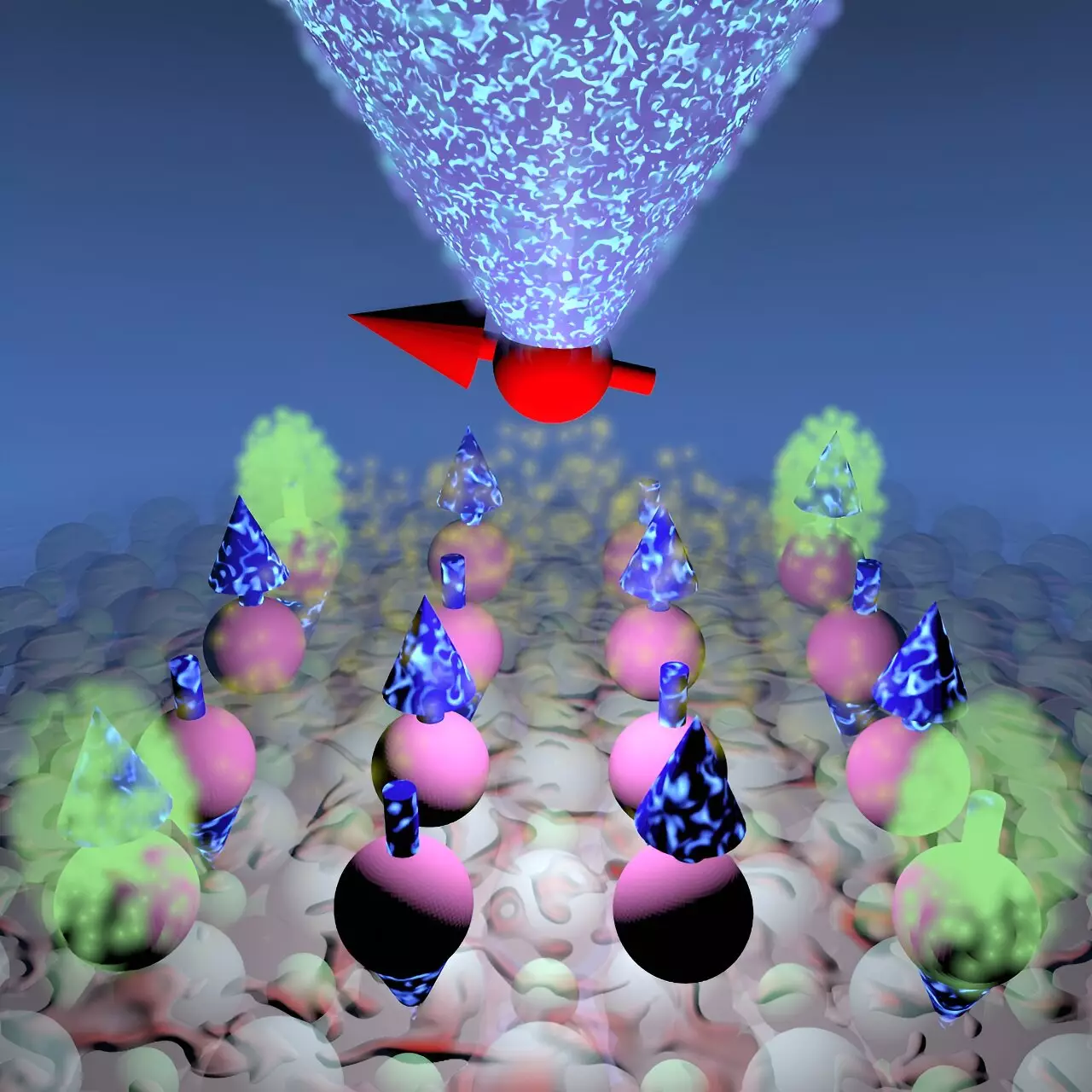In the intricate domain of quantum physics, the interplay between individual atomic behaviors and the collective phenomena they produce can lead to the emergence of entirely new states of matter. As researchers probe deeper into quantum mechanics, the emergence of collective quantum states has captured the imagination of scientists across various disciplines. By thoughtfully combining atoms with distinct quantum attributes, researchers are beginning to uncover macroscopic quantum states characterized by unique excitations that challenge traditional understandings of matter.
Recent investigations by a collaborative team from Aalto University and the Institute of Physics CAS have made significant strides in this area. Their ambitious endeavor involved constructing an artificial quantum material piece by piece, assembling it from magnetic titanium atop a magnesium oxide substrate. This meticulous crafting aimed to control atomic interactions and ultimately forge a novel quantum state of matter. The theoretical groundwork for this transformative material was laid by Jose Lado, an assistant professor at Aalto University, whose innovative design focused on topological quantum magnetism.
The intricate work of fabricating this quantum material was led by Kai Yang, an associate professor at the Institute of Physics CAS. Employing advanced techniques such as scanning tunneling microscopy, the team manipulated individual atoms with precision that verges on the extraordinary. The end product was a concrete realization of a higher-order topological quantum magnet, an achievement that marks a pivotal point in condensed matter physics.
This newly constructed quantum magnet does more than merely contribute to the scientific canon; it opens new avenues for technological advancement in the field of quantum computation. Its design offers robust protection against decoherence—an issue that plagues many quantum systems and limits their practical applications. According to Lado, the creation of such a material signifies not just another scientific milestone, but rather the blossoming of a fresh branch of theoretical exploration in physics.
What makes the topological quantum magnet particularly noteworthy are the exotic excitations embedded within it. These excitations—characterized by their unusual properties—defy conventional behavior of magnetic states. In classical terms, materials manifest magnetic states that fluctuate or change under various conditions; however, topological quantum magnets introduce a dimension where elementary magnetic excitations can exist in a superposition state. This points to revolutionary possibilities in creating phenomena that cannot be achieved with existing quantum materials.
Excitations in these materials include fractional and quasi-particle states, where electrons exhibit behaviors that seem to defy intuition, acting as if they can be bifurcated and exist independently. This richness in quantum behavior not only broadens the scope of current magnetic material studies but also facilitates the quest for new physical phenomena that could redefine the boundaries of quantum physics.
A particularly fascinating aspect of this research lies in how the researchers tuned the behavior of atoms within the quantum material. By employing an atomically sharpened metallic tip, they effectively “poked” the individual atoms to stimulate their local magnetic moments. This process resulted in enhanced coherence among topological excitations, a trait significant for developing reliable quantum information systems.
One of the most compelling results of this experiment was the observation of the topological excitations exhibiting a remarkable resilience against external disturbances. This feature, predicted initially in Lado’s theoretical framework, signifies a substantial leap forward in building quantum materials that can withstand real-world perturbations—an essential requirement for robust quantum computation and information storage.
Implications for Quantum Technologies
The ramifications of this research extend well beyond theoretical physics; they hold promise for practical applications in future quantum technologies. The properties of these topological excitations could well serve as foundational elements for next-generation qubits that are less prone to decoherence. As quantum systems evolve, the protection offered by these newly identified states may significantly address one of the most pressing challenges faced by quantum engineers today.
The successful fabrication and measurement of the higher-order topological quantum magnet symbolize not merely an advancement in material science but an invitation to explore a transformative path in quantum technology. Such developments could indeed herald a new era of innovation, propelling us closer to realizing the potential of quantum computing and beyond.

